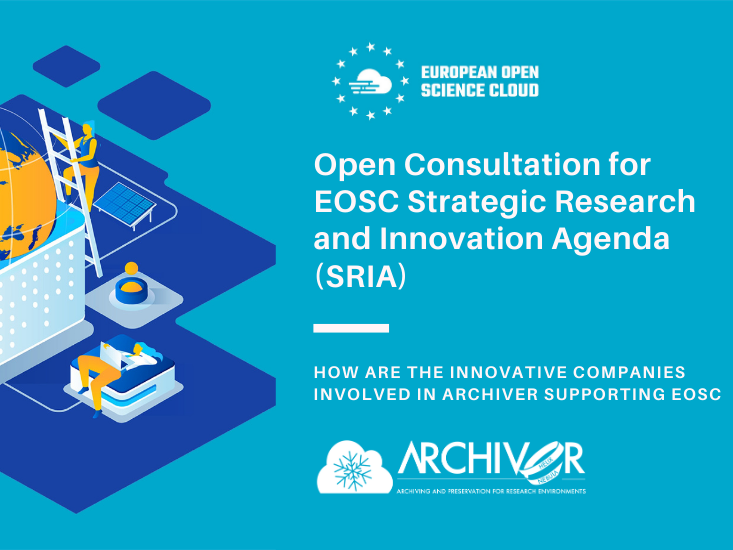How are the innovative companies involved in ARCHIVER supporting EOSC
The EOSC governing bodies have identified 14 Action Areas to help deploy the EOSC ecosystem. With regard to these, ARCHIVER highlighted that, from a business perspective, stable and fair business models are key to incorporating the innovations that are fostered by the private sector into this initiative. An Action Area that drew the attention of ARCHIVER and the commercial consortia of the project is AA4 – Authentication and Authorisation Infrastructure. EOSC should be able to offer more and better services, e.g. for specific analytics or long-term observations that otherwise would not be available, in order to be adopted at a large scale. Some ARCHIVER companies put emphasis on the fact that stimulating use cases, innovation aspects and optimising capital expenditure are Action Areas underrepresented in EOSC. They also noticed that the actions should include a better quantification and optimisation of the current use of capital expenditure in e-Infrastructures. In addition, it is important to support the growing volume of data and objects produced within the whole research life cycle, including also the stage of preservation of the knowledge produced. Another important point made by ARCHIVER is that in the Action Areas there is not enough emphasis on the long-term curation and stewardship of data, i.e. ensuring that data is interoperable and re-usable over very long timescales. This means not only having certified repositories and ensuring data is preserved and accessible, but also ensuring that data is long-lived by design and that longevity and reuse are part of the mindset when data is first created, stimulating the creation of a “Preservation by Default” mentality. The general comment ARCHIVER made about EOSC priorities is that “everything should be interoperable at European level, where possible”. Otherwise, the risk is that local and national infrastructures, initiatives, standards, policies, practices, etc. will never be fully integrated effectively, which makes EOSC harder to achieve. Some ARCHIVER Contractors suggested that prioritising the use of pan-European services and resources should be stimulated, and they see this as a missing priority. In addition, one of the priorities that should be included is the identification of support of sustainable European federated e-Infrastructures capable of handling the full research life cycle, including the resources needed to preserve the knowledge produced by the diverse communities and scientific domains involved. Another point raised by ARCHIVER is the need for a task force or working group to look at the long-term aspects of achieving FAIR, such as the curation and quality of data, the importance of TDRs and TRUST, the role of digital preservation in data stewardship, and the frequently overlooked economics of long-term data access and reuse. The ARCHIVER project includes in its R&D a hybrid cloud service approach that relies on most of the principles highlighted by EOSC. The Results of the R&D activities in the PCP Project (Design, Prototype and Pilot) can be very relevant to the baseline of definition, development and implementation of the EOSC SRIA. In addition, collaboration between ongoing initiatives would be a great opportunity to align and improve all of them. For example, the results of projects, such as OpenAIRE and Freya, which cover domains that are targeted by the Action Areas, must be taken as the baseline for the actions implemented by EOSC and this must be integrated into the strategy. Aligning with what has been mentioned above, Horizon Europe should implement an “EOSC first” principle in order to avoid projects replicating alternatives when not necessary. Clear EOSC guidelines must be established and must be dutifully fulfilled in a coordinated manner by future projects under the Horizon Europe umbrella in order to avoid fragmentation at national level and by scientific domain.
Keywords
digital preservation, archiving, research, EOSC



